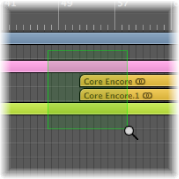16 Considerations for Naming New Instrument Presets — Pro Audio Files
It is human nature to categorize the world in order to make sense of things, and to perhaps mitigate the overwhelming variety that exists in all facets of our environment. Anyone that studies a subject in-depth will need to implement (and in some cases invent) logical ways to compartmentalize concepts in order to better understand the ideas, not only in isolation but as they relate to the larger body of knowledge. This process is not an easy one, and there can be pitfalls concerning things that fall into grey areas or potentially unique items that may not fit into any established category.
